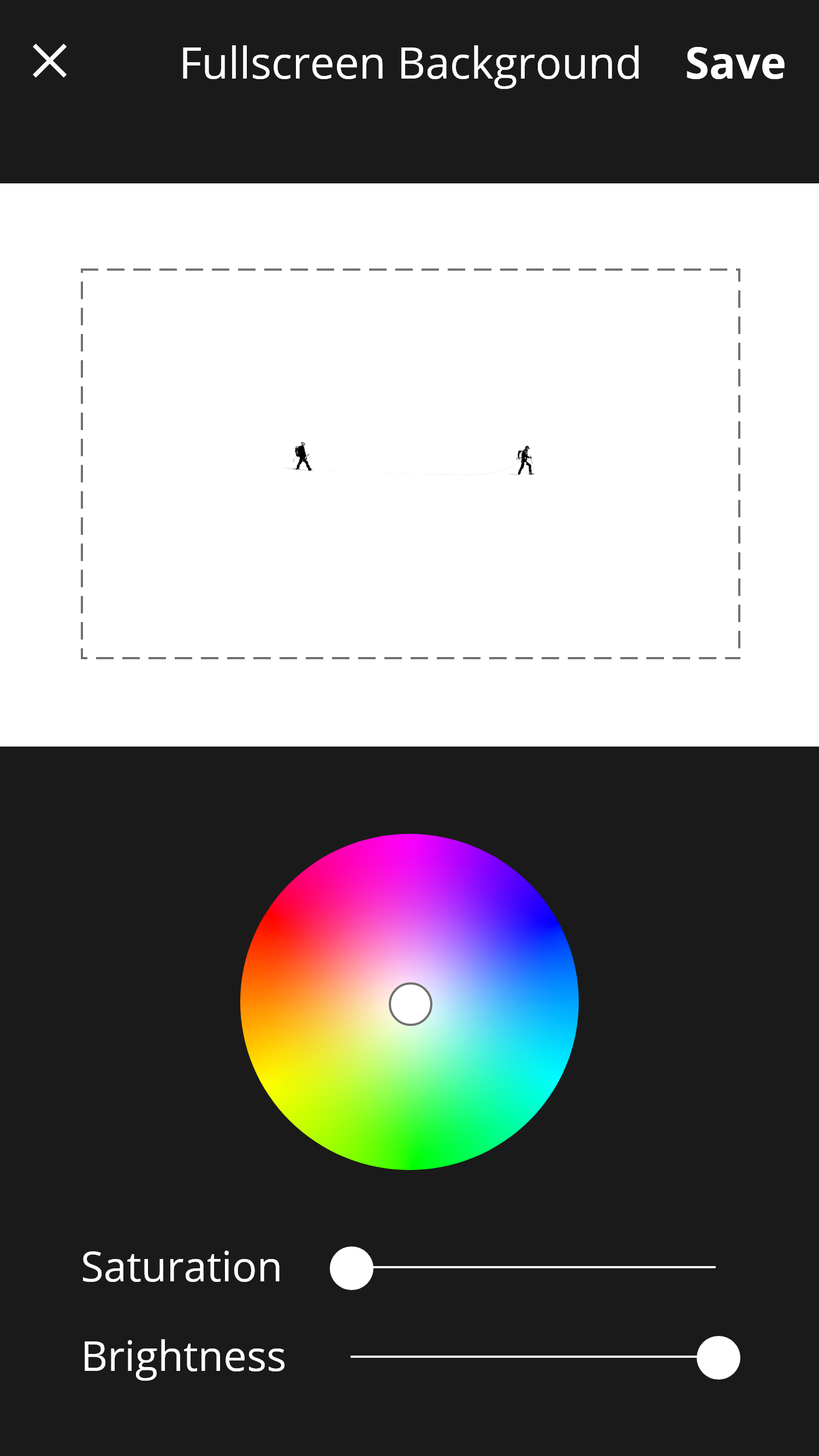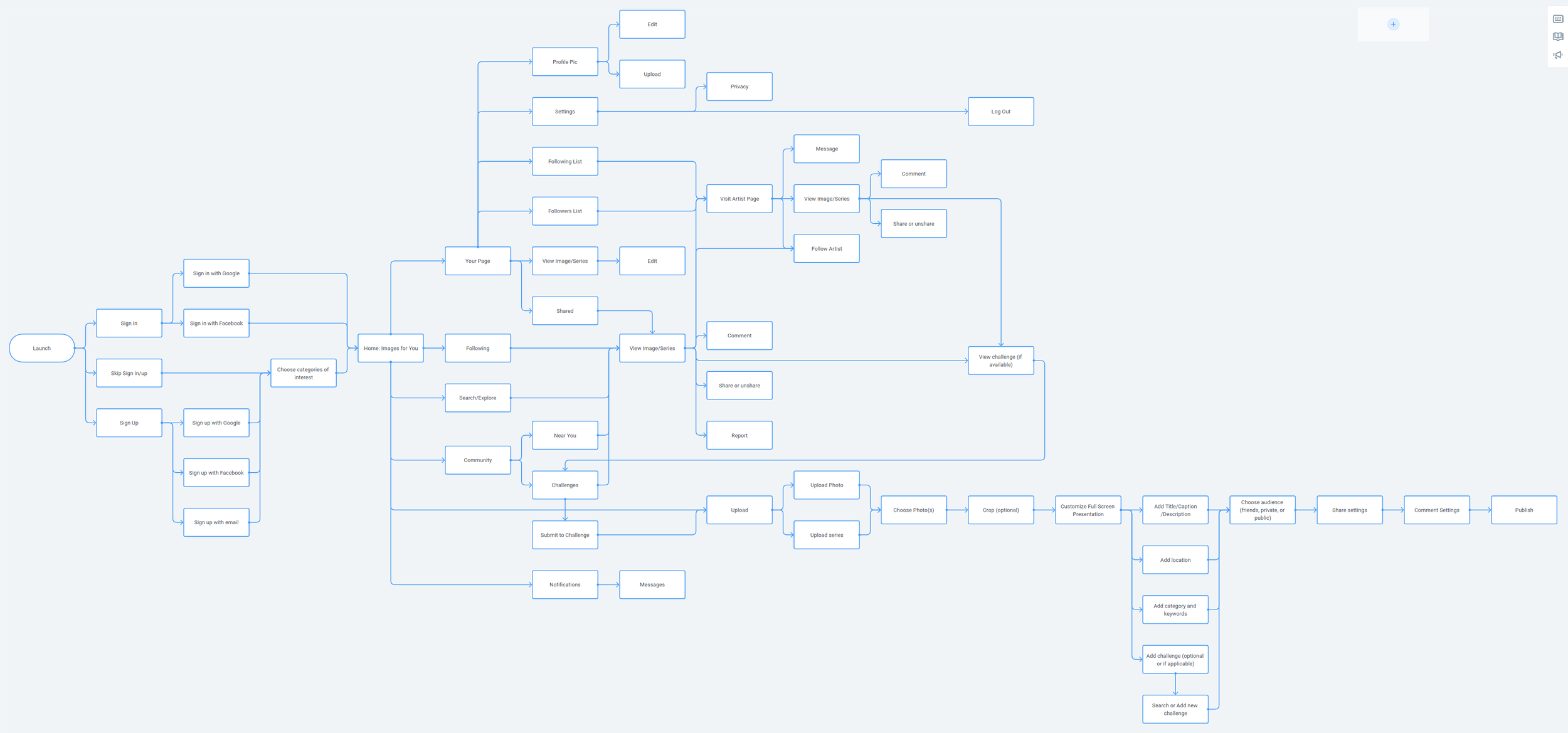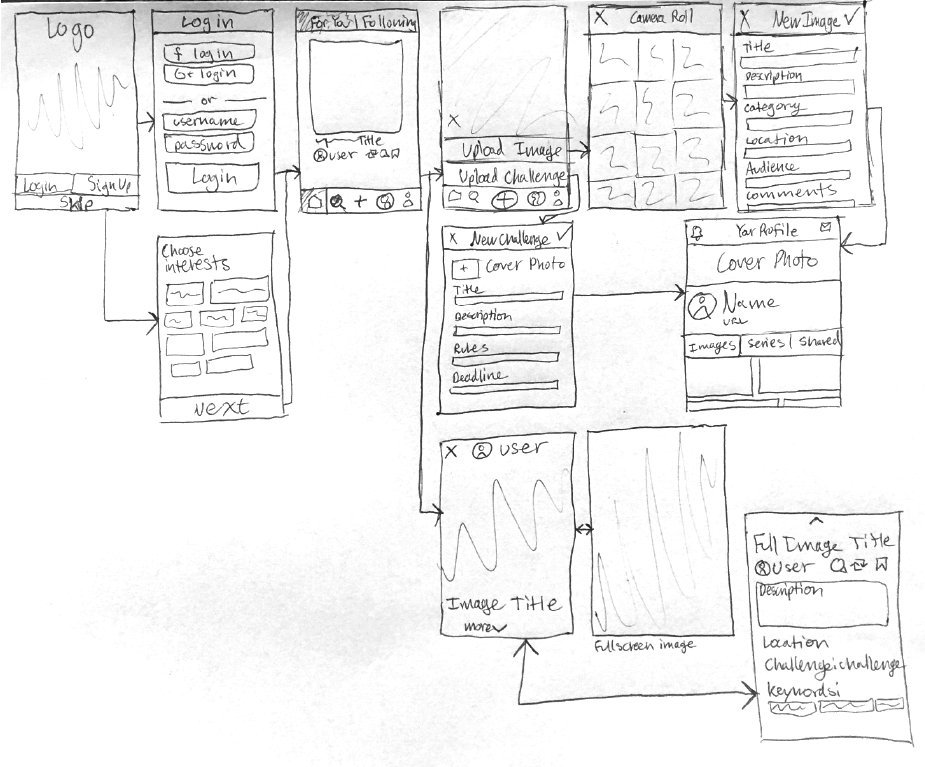Exhibit is a social network where users can share their photos and engage with larger photographic communities. It is designed to serve a demographic that other platforms have failed to do effectively.
Overview
Prompt
When I was assigned to design a solution to a problem I cared about (in my final design course), I knew I wanted to focus on social media for photography.
Context
As a photographer, I found the user experience provided by current social media apps to be lacking in different ways. Some had other content that competed for attention (eg: ads and videos reels on Instagram & TikTok); others were focused on photography but had lacking community interaction features (eg: VSCO & Pinterest). Before I could do anything, however, I needed to know for sure if there were other photographers who were experiencing something similar to me.
Preliminary Research
I needed to answer the following questions:
Are there other photographers who are also dissatisfied with current photo sharing platforms? If so, how and why?
To answer these, I conducted an online open-ended questionnaire, aimed at people who share their photography online (between the ages of 18–35).
Some of the questions that were asked:
Why do you take photos? Why do you share them?
What do you like and dislike about the app(s) you use?
How do you spend your time on the app(s)?
Do you have any thoughts on likes and comments?
Key Findings
Users enjoy sharing photos they think are visually interesting or inspiring.
Users enjoy conversations with their community rather than likes
They like to discover new, inspiring content
Some photographers want to reach new viewers and get appreciation/feedback on their work
Some want more flexibility in how they present their images
What people liked about current apps was community interaction, focus on imagery, and ease of use
Disliked aspects were distractions from viewing photos, monotonous presentation of imagery, difficulty growing audiences, unhealthy comparisons and too little community interaction
User Personas
Based on these user surveys, I was able to characterize the target audience with two personas:
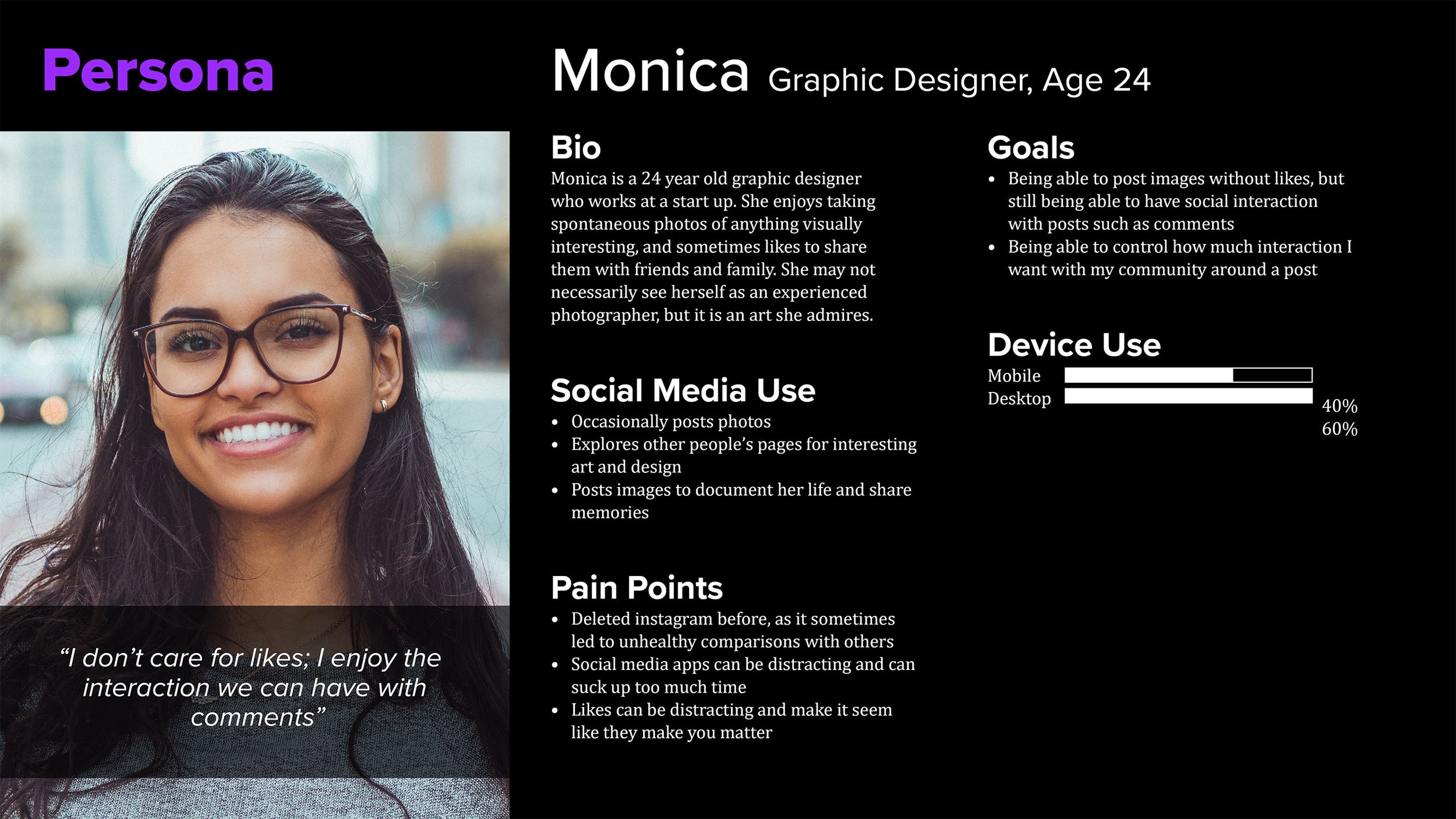
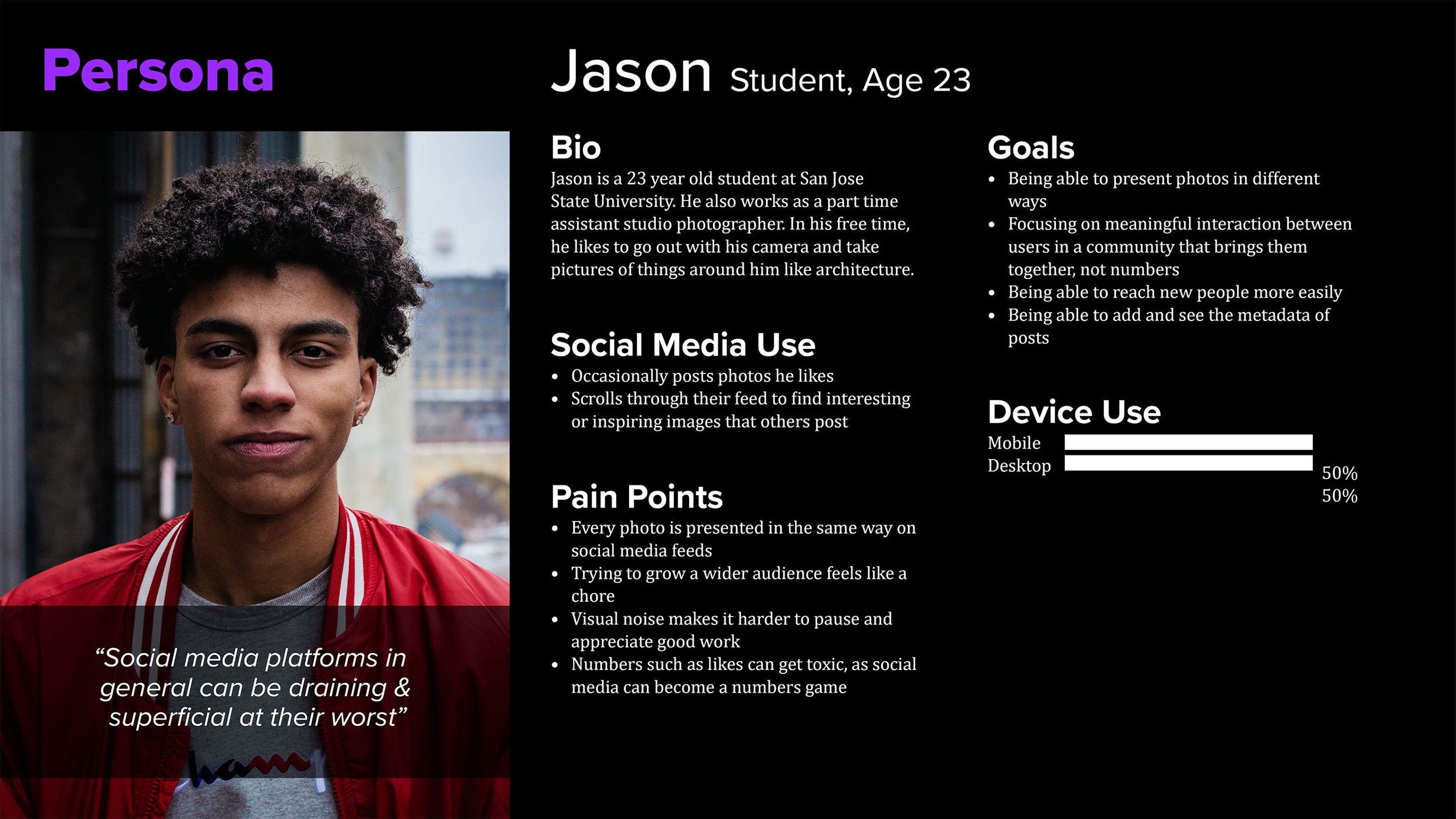
User Goals
The personas were then used to define the following user goals:
Present photos in more immersive and different ways
Reach new people more easily
Discover new images and photographers
Have meaningful interactions with the community
Choose how much interaction they want to have for different posts
Problem Statement
To make sure that my design solution properly addressed user goals and pain points, I needed an encapsulating problem statement:
How might we design a platform for photographers that prioritizes imagery, community interaction, personalization, growth, and outreach?
Designing the Solution
Ideation
In other words, the solution needed to have two priorities above all else:
Imagery (both sharing and discovery)
Community (meaningful interaction and growth)
Brainstorming led to two key ideas:
Photo presentation customization (for those who want it)
Photo challenges (a unique way to provide community interaction in addition to the standard comment threads for images)
SOLUTION
SOLUTION
Key Unique Features
Full screen images + customization
Discovering local photographers
Photo challenges
Full screen images + customization
To address users’ needs for prioritizing their images and minimizing distractions, photos should be given the same first class, immersive treatment that videos get on all major social media apps.
With this solution, photographers can control how their images appear, and can change their presentation from image to image if they like.
Local imagery & photographers
Part of the fun of being a photographer is discovering other creatives and getting inspired, and interacting with one another. The “Near You” section provides a way for local photographers to discover and support each other’s work, providing an avenue to build a potentially in-person community.
Photo challenges
User-made challenges can be a fun way for photographers to engage with the community through imagery, instead of just commenting or sharing posts. Sponsored challenges can be a way for the platform to make revenue in the future.
Prototype
Design Process
User flow mapping
Wireframe Sketches
Wireframes
Next Steps
Upon having a working prototype, I would then conduct user testing with a few select users. In these sessions, the focus would be getting feedback on how intuitive (or not) the user experience is for testers. This is also where I would ask for feedback on the overall experience:
Does the app satisfy their goals of more meaningful engagement and community interaction?
Does the app provide a better way of sharing and discovering inspiring imagery?
Is the overall user experience intuitive and satisfying?
Based on feedback, I would reiterate my designs and then proceed to perhaps another round of testing, before release.
Gauging Success
User reviews, surveys, and interviews would be the best way to get qualitative feedback on success of the app. Number of downloads, sign ups, and active weekly or monthly users would provide quantitative data to complement. Together, they would inform the next iteration of the design cycle.






